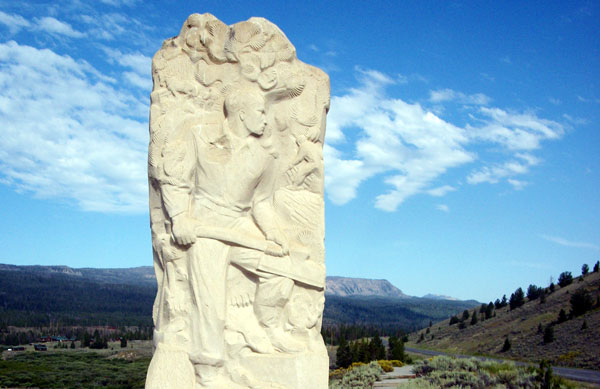|
|
|
About This Site |
OF THE HARDY WOODS AND RIVER MEN WHO MADE AND DELIVERED THE CROSS TIES FOR THE BUILDING AND MAINTENACE OF THE CHICAGO AND NORTH wESTERN RAILWAY IN THE WESTERN COUNTRY WYOMING TIE & TIMBER COMPANY In 1914, the Wyoming Tie & Timber Company began cutting railroad ties in the Togwotee Pass. Ties were also cut in Union Pass where the remains of some of the old log flumes may still be seen. The ties would be floated down the Wind River to Riverton for use on the Chicago and Northwestern. Tie Hacking in Wyoming, however, dates back to the coming of the Union Pacific in 1868 when tie hack camps sprang up in the Medicine Bow Mountains to serve the Railroad. At the beginning of the 20th Century, tie hack camps were located in the Big Horn and Wind River Mountains. Tie camps all bore a similar structure. There was a headquarters camp which included a commissary, possibly a small school, provision for mail and housing. The headquarters camp for the Wyoming Tie & timber Company was at DuNoir near the present site of the Brooks Lake Lodge. Out in the woods there would be smaller subordinate camps.
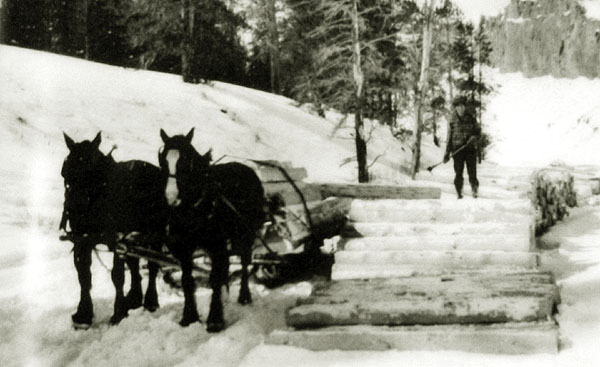 Ties being moved on come-along.
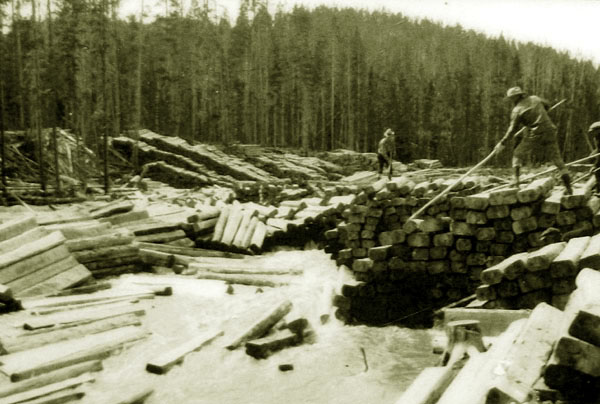 Pushing ties into river near Dubois.
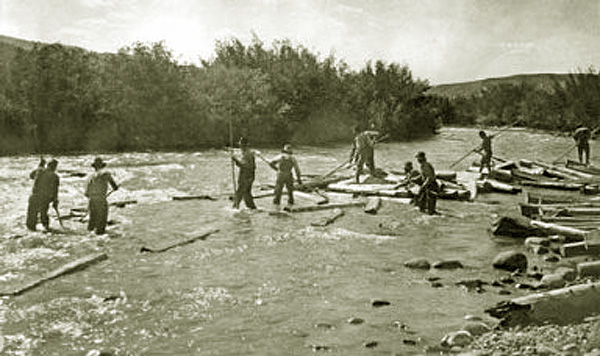 Tie Hacks near Dubois.
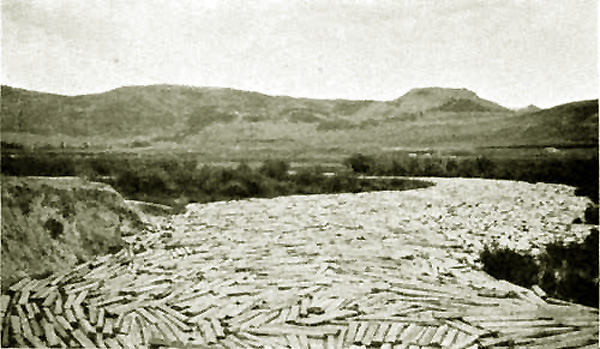 Spring Tie Drive, Washakie National Forest, 1924. 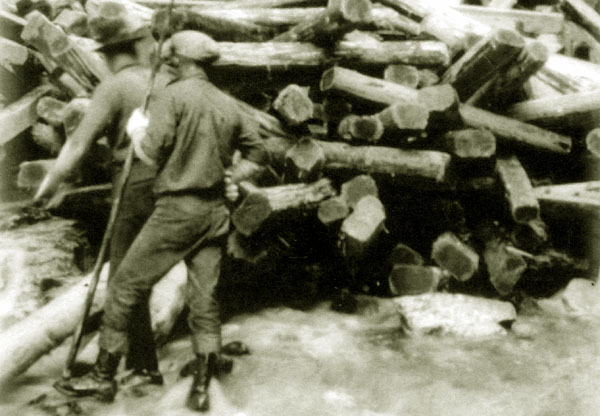 Clearing a tie Jam on the Wind River. [Writer's personal note, when I was in college, one summer I sold Watkins Products, famous for its vanilla extract, double strength. I sold more vanilla that the rest of the Watkins line of spices put together. Maybe I was naive, but I genuinely believed it was used in baking. My mother-in-law was a member of the Women's Christian Temperance Union and, thus, always used imitation vanilla which had no alcohol in her baking. Meanwhile, out back in a small barn, my father-in-law, a former prohibition officer, would make his own wine. One day during the holiday season, my wife's Aunt Rose and Uncle Douglas came to the house bearing some home made egg nog. My mother-in-law was reassured by Uncle Douglas that the rum flavor was purely imitation. Thus, my mother-in-law was persuaded to try some. She declared it to be the best egg nog she had ever had. Somehow, I have the impression that the flavoring was not really imitation.]
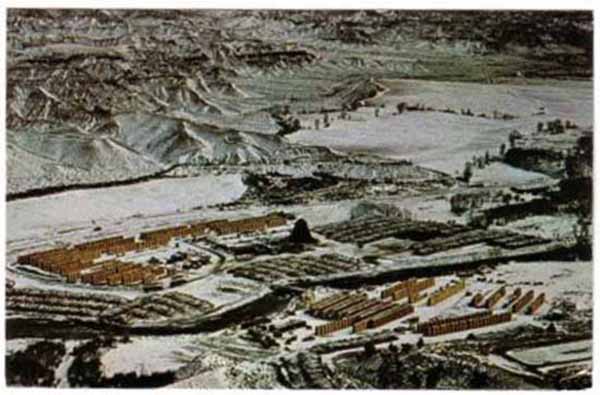 Teton Lumber Mill, Dubois With the end of timbering in 1987, jobs were lost and the population actually declined from its peak in 1980 of over 1,000 to less than 900 in 1990. Indeed, in one sermon, the rector of St. Thomas, The Rev. Lynn E. Cunningham, lamented the hardships that had been visited upon the town, the Outlaw Saloon, and the liquor store: There are unsettling realities about this town. Dubois in effect makes its living by being a great place to get away to, particularly for summer residents. But there is precious little economic base for the town. The town has no economic taproot, as it used to. There is no longer a lumber mill and industrial logging. The ranching economy is much reduced. Not much manufacturing goes on here, although Dubois is lucky to be spared the kind of coal and natural gas boom development that is overwhelming some of our sister towns, such as Pinedale and Gillette.July 8, 2007 The Reverend Cunningham continued, "A look at the local real estate listings is revealing of the hard times: most of the major, local, retail buildings are up for sale, including the Outlaw Saloon, the Merc, Absaroka Western Designs, Daylight Donuts, the Country Store, and others." He noted his concern over the condition of the Opp Shop and the liquor store.
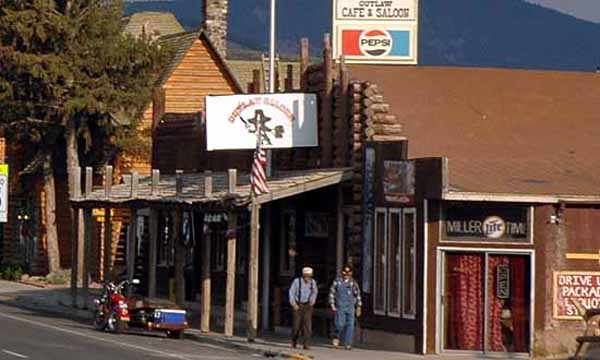 Outlaw Saloon, 2006.
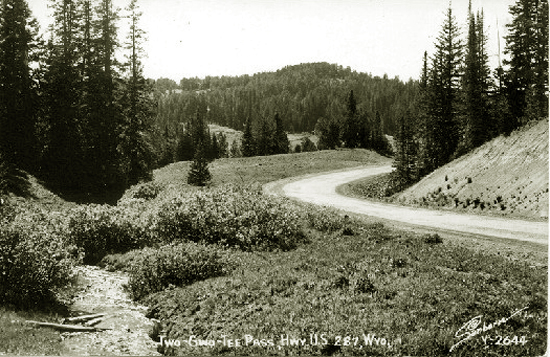 Togwotee Pass, approx. 1952.
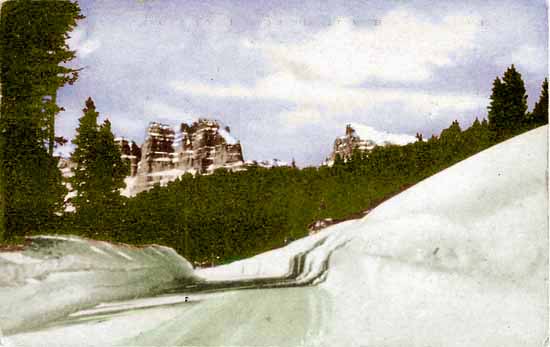 Togwotee Pass,Winter, undated.
Next page: Hayden Expedition. |
